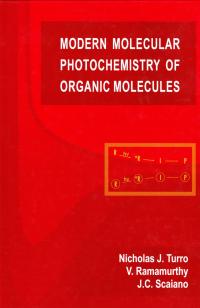Modern Molecular Photochemistry of Organic Molecules
Modern Molecular Photochemistry of Organic Molecules
By: Nicholas J. Turro, V. Ramamurthy, J.C. Scaiano
This book comprises all of the same introductory chapters that make up Principles of Molecular Photochemistry, but then goes on to provide additional chapters that cover the methods for determining the mechanisms of organic photoreactions.
For all sales outside of the United States, please contact Felicity Henson, fhenson@aip.org
Title information
Modern Molecular Photochemistry of Organic Molecules is a comprehensive revision of Turro’s classic text, Modern Molecular Photochemistry, which has been the standard of the field for three decades. For a crystal-clear introduction to organic photochemistry in pictorial terms, this book comprises all of the same introductory chapters that make up Principles of Molecular Photochemistry, but then goes on to provide additional chapters that cover the methods for determining the mechanisms of organic photoreactions, and describe comprehensively the photochemistry of the basic functional groups of organic chemistry. The text also includes special topic chapters on supramolecule organic photochemistry, the first of its kind, and the role of triplet and singlet molecular oxygen in organic photochemistry.This text will be of interest to not only practicing photochemists and their students, but also to biological scientists, polymer scientists, material scientists and nanoscientists who use photochemistry and photophysics in their research and teaching. For adopting professors, an art CD of figures from the book is also available.
1. Molecular Photochemistry of Organic Compounds: An Overview
2. Electronic, Vibrational, and Spin Configurations of Electronically Excited States
3. Transitions between States: Photophysical Processes
4. Radiative Transitions between Electronic States
5. Photophysical Radiationless Transitions
6. A Theory of Molecular Organic Photochemistyr
7. Energy Transfer and Electron Transfer
8. Mechanistic Organic Photochemistry
9. Photochemistry of Carbonyl Compounds
10. Photochemistry of Olefins
11. Photochemistry of Enones and Dienones
12. Photochemistry of Aromatic Molecules
13. Supramolecular Organic Photochemistry
14. Molecular Oxygen and Organic Photochemistry
15. A Generalization of the Photochemistry of Organic Molecules
Index
|
“I strongly recommend this comprehensive and brilliant book to graduate and advanced undergraduate students.” “The book could be used as an undergraduate text as well as an encyclopaedic reference work covering the breadth of photochemistry….A must for newcomers to the field and as a reference for established practitioners.” “This book provides a solid theoretical background that integrates well with the experimental examples and practical applications…The knowledgeable organic photochemist will find much to learn from MMPOM, as will practitioners in the fields of chemical biology, polymer chemistry, materials science, and nanoscience who use organic photochemsitry.” “This is an excellent introductory work for practicing photochemists or those with a particular need to understand how theoretical chemistry and physics can be applied to photochemical synthesis of complex organic molecular structures…Summing up: Highly recommended.” “Long the bible of organic photochemistry and available in a new 2010 edition…its clarity will serve you well.” “This text shows the student how the apparent complexity of organic photochemistry can be reduced to a set of simple paradigms that can be applied to all organic functional groups. The critical concepts of electronic and spin interactions are presented in pictorial terms that can be readily understood by students at the undergraduate and graduate levels.” |

